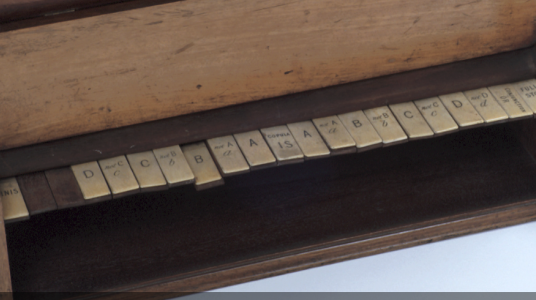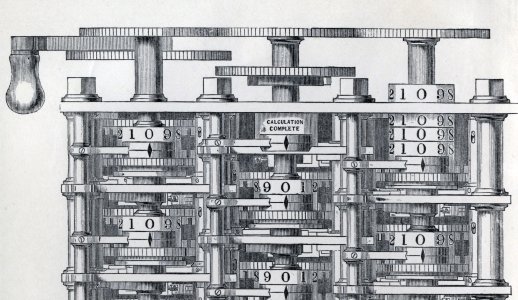You can't move (or read) for mention of artificial intelligence. And while we may only have a vague idea of what AI is, we know for sure that it is revolutionary and that it is new.
Except it isn't. Think Mary Shelley's creation in ‘Frankenstein’, and how it challenged ideas of what it meant to be human. How about Victorian Charles Babbage's 'Difference Engine' (pictured), feted as the forerunner of the computer. Babbage’s collaborator Ada Lovelace understood how it might weave patterns and compose music, as well as crunch numbers.
Or look at Stanley Jevons's remarkable mechanical 'logic piano' from the 1860s, which seemed to reduce the operations of the brain to wood and wire (pictured below).
'Imagining AI' places artificial intelligence in its historical context via displays, lectures and demonstrations. See AI in the making with manuscripts from Babbage, Lovelace, Shelley, and Turing's collaborator Christopher Strachey. Look at Jevons' 'logic piano', and components of Babbage’s machines.
And meet Ai-Da, a thought-provoking contemporary robot artist providing inspiration to pupils of Cheney school. You are all welcome to join us in Oxford in the Bodleian's Weston Library, and the History of Science Museum.
9th September
Workshop in the Blackwell Hall, Weston Library. A day's talks and discussions, from Mary Shelley and Ada Lovelace in the 19th century to Christopher Strachey and Alan Turing in the 20th. Sign up to the workshop
The workshop will be accompanied by a free Exhibition opening in the Weston Library and History of Science Museum featuring the work of Shelley, Lovelace, Jevons and many others.
10th September
Imagining AI demonstrations, including Ai-Da, the world’s first ultra-realistic robot artist (booking required), and a 3-D print of Babbage's Difference Engine.
More information on all the exhibitions here



